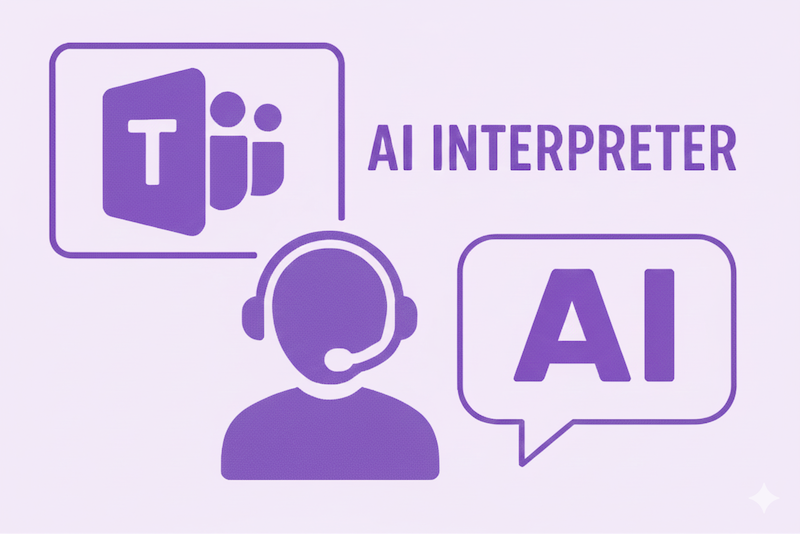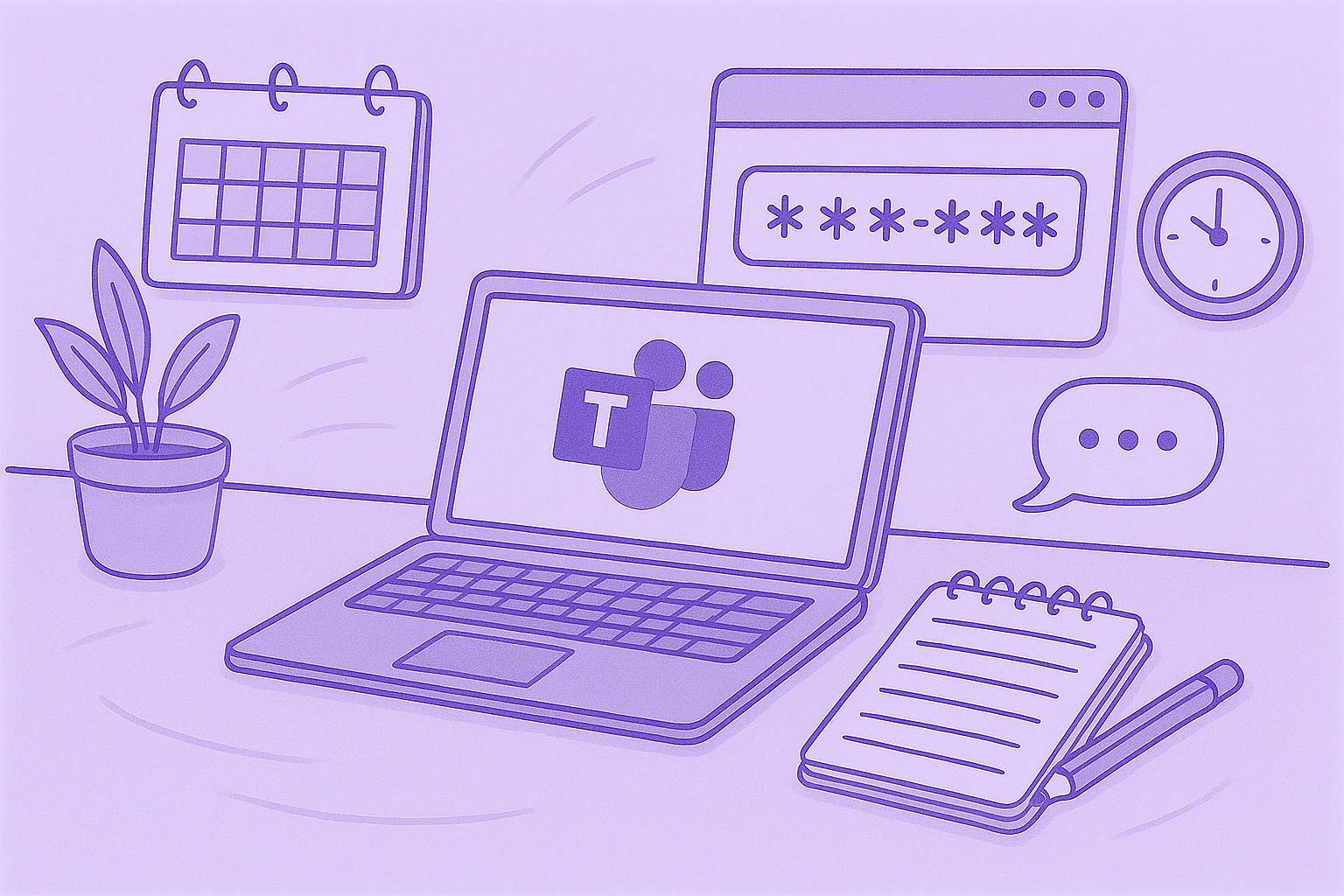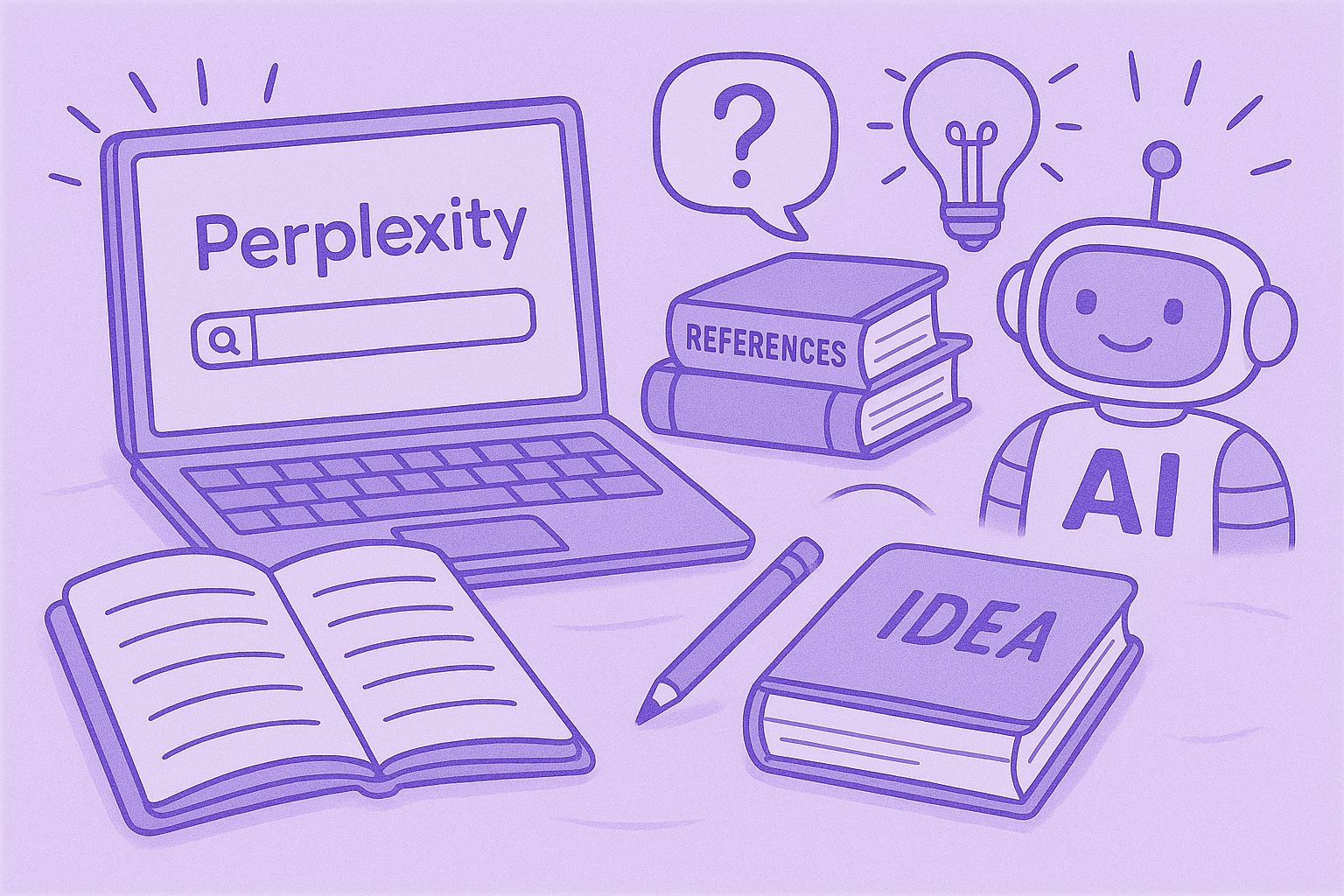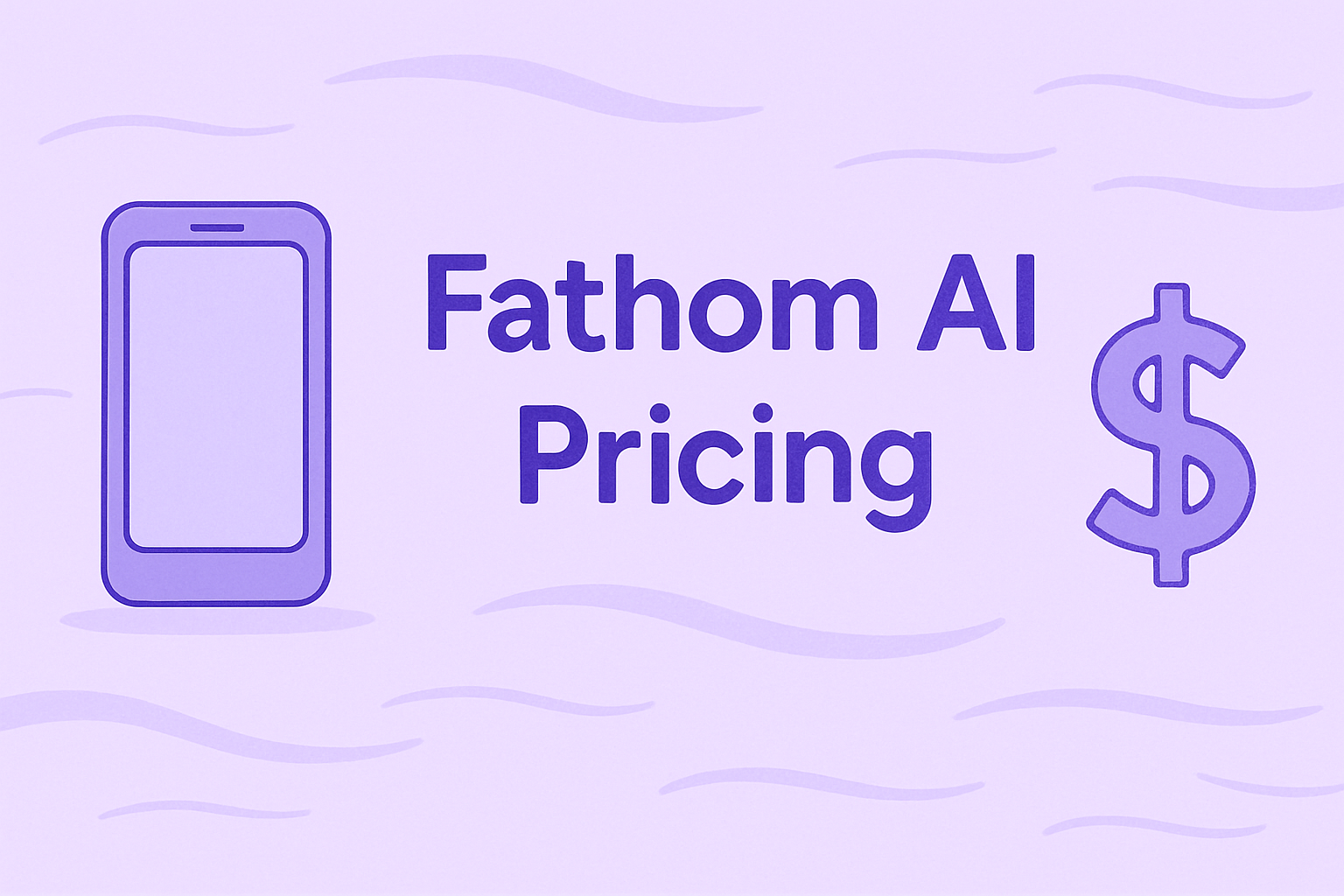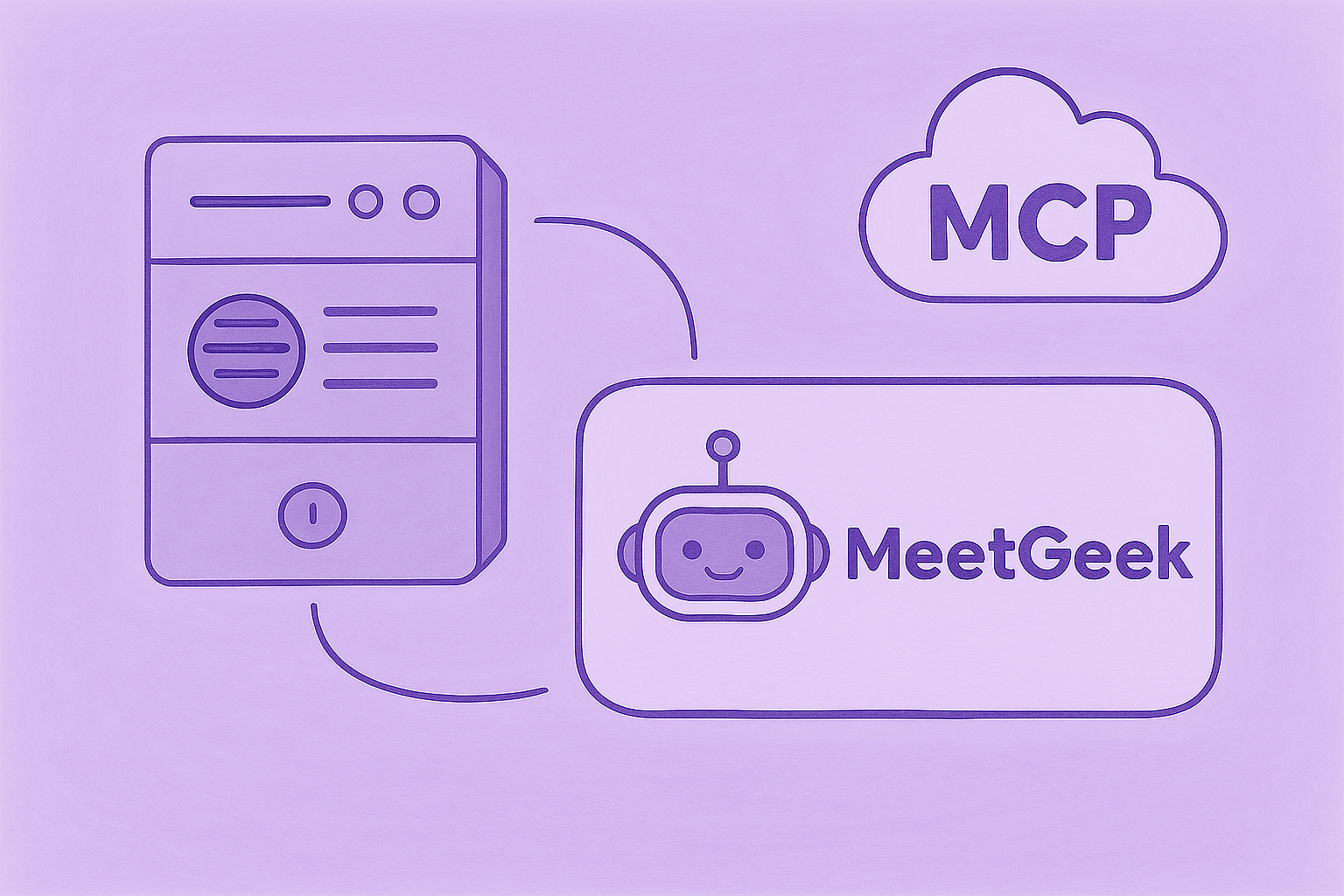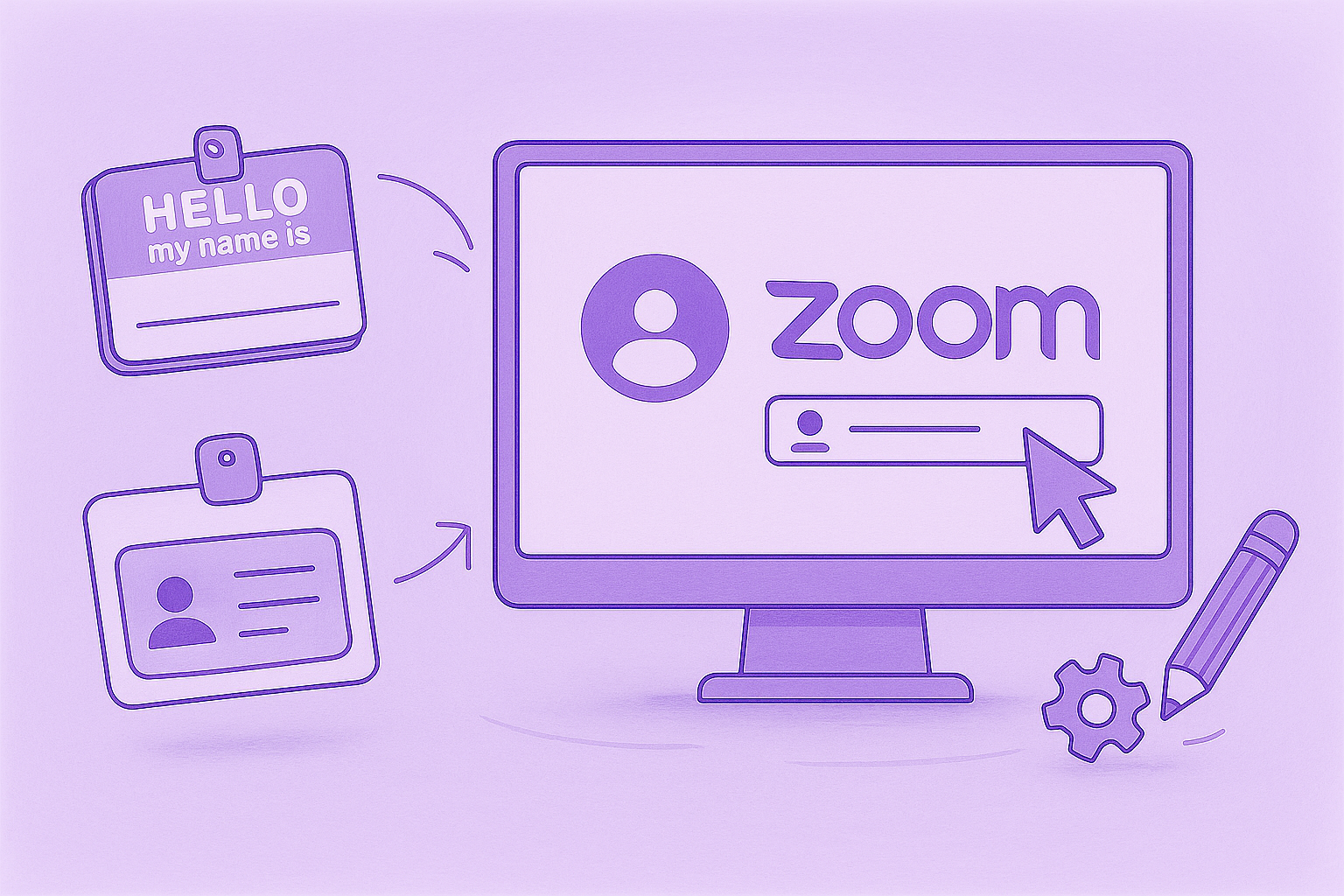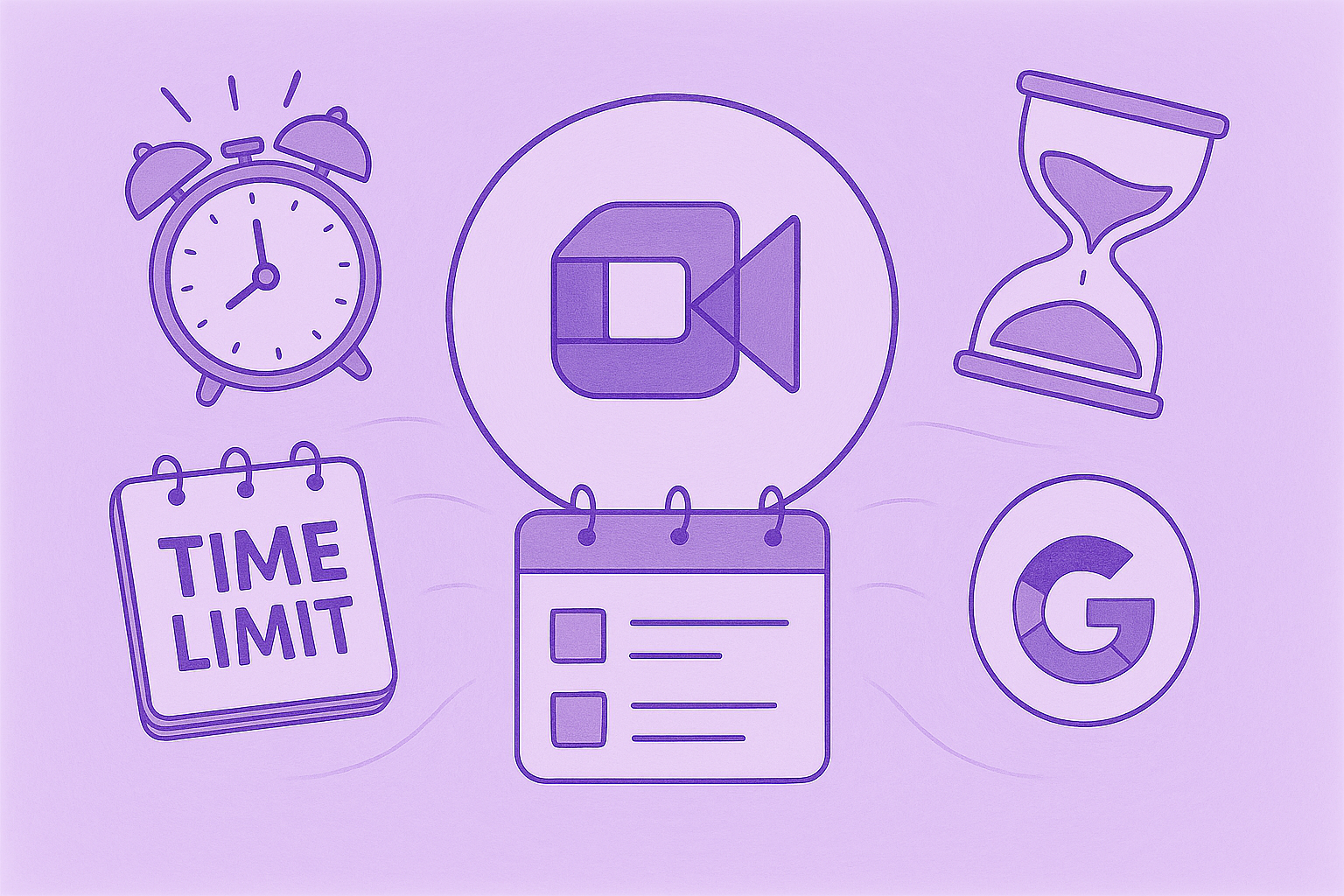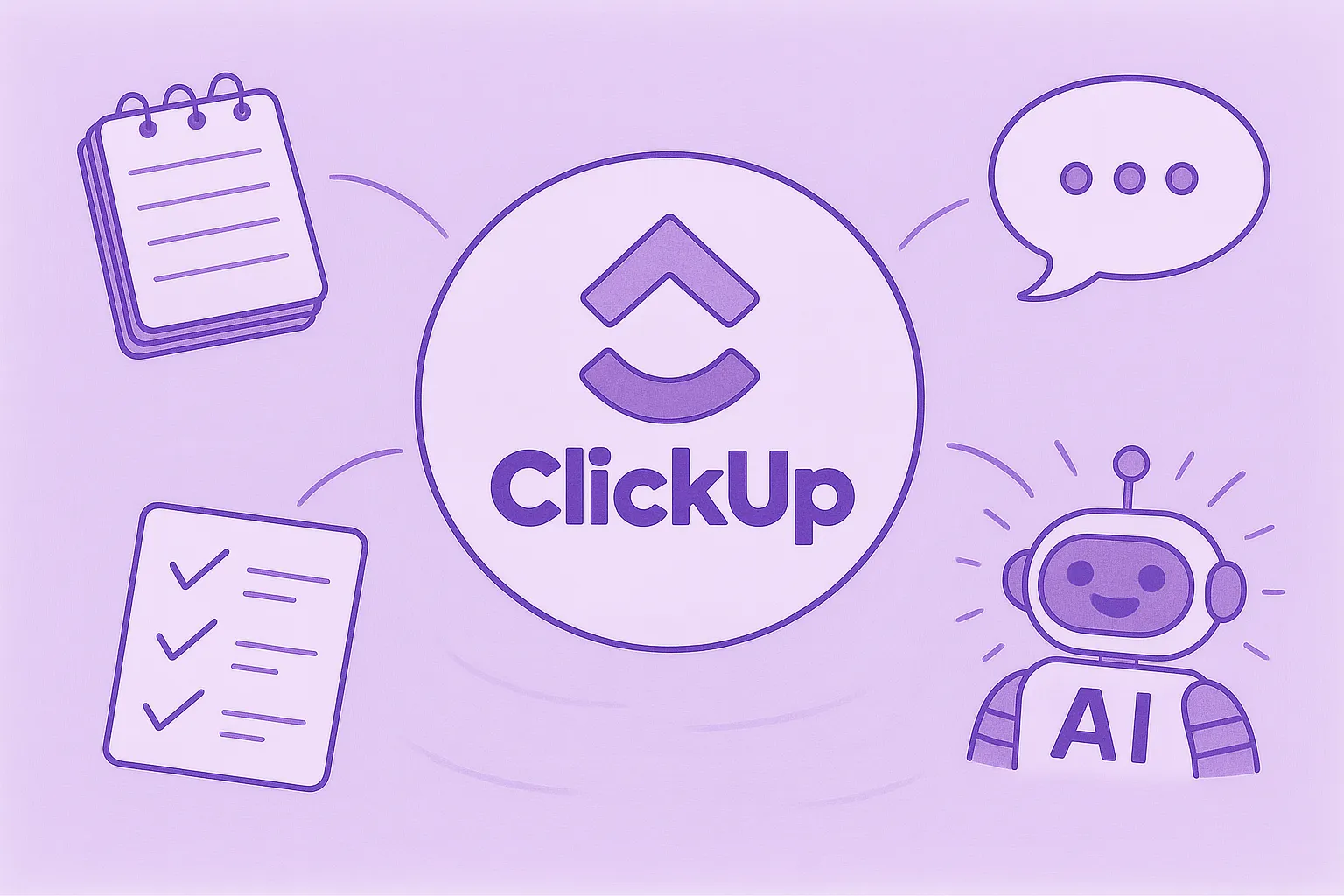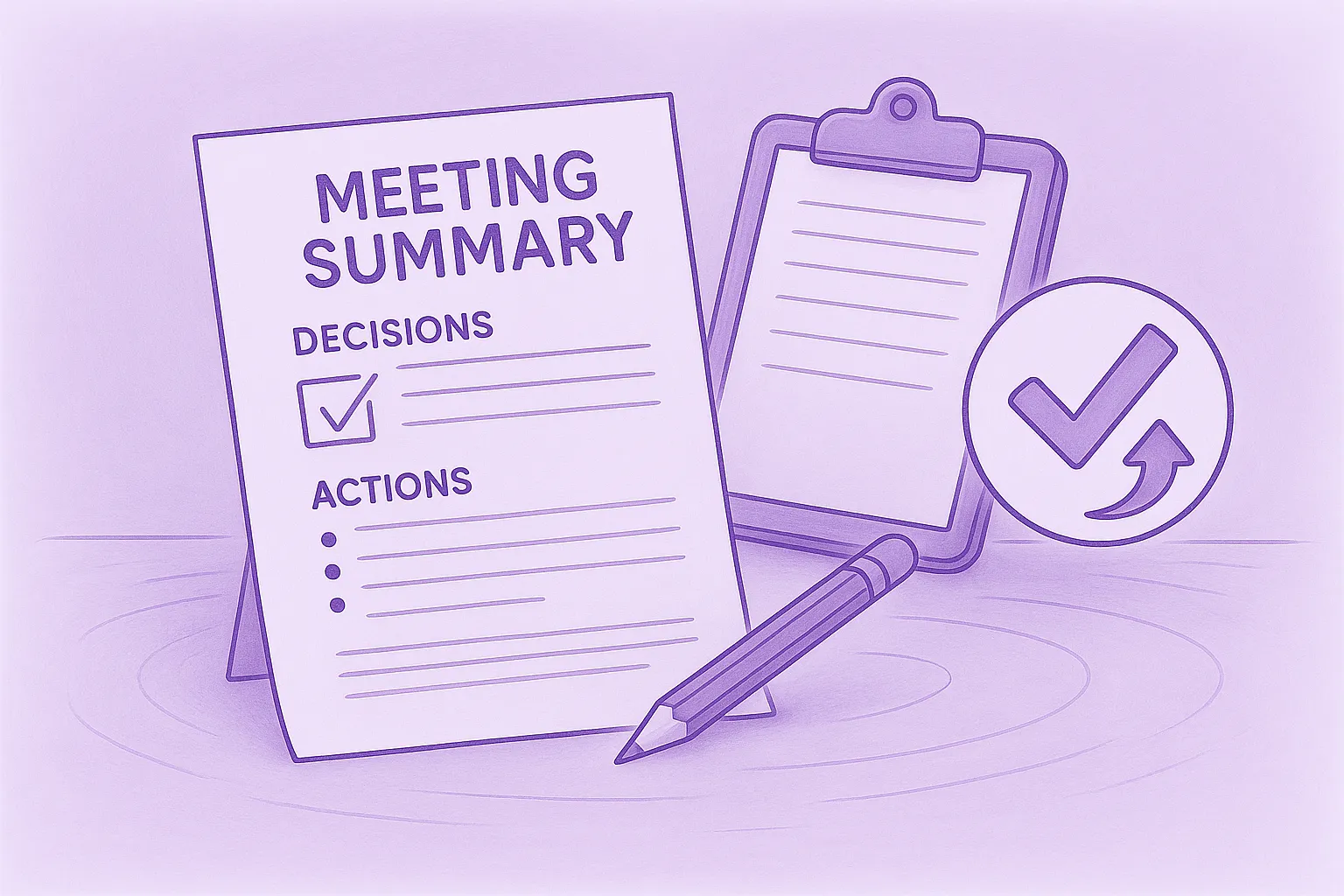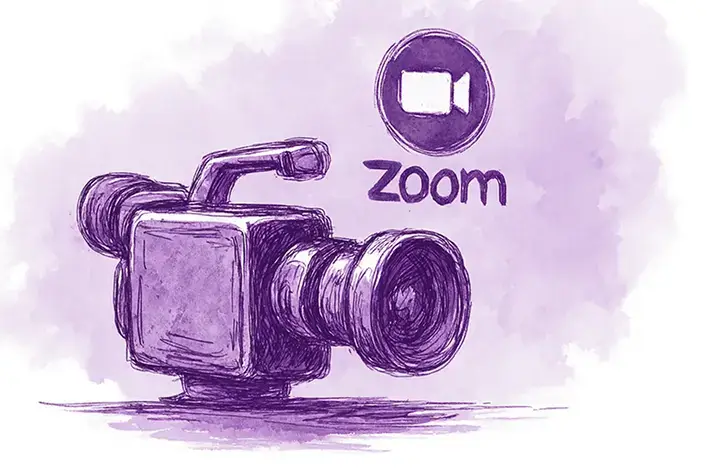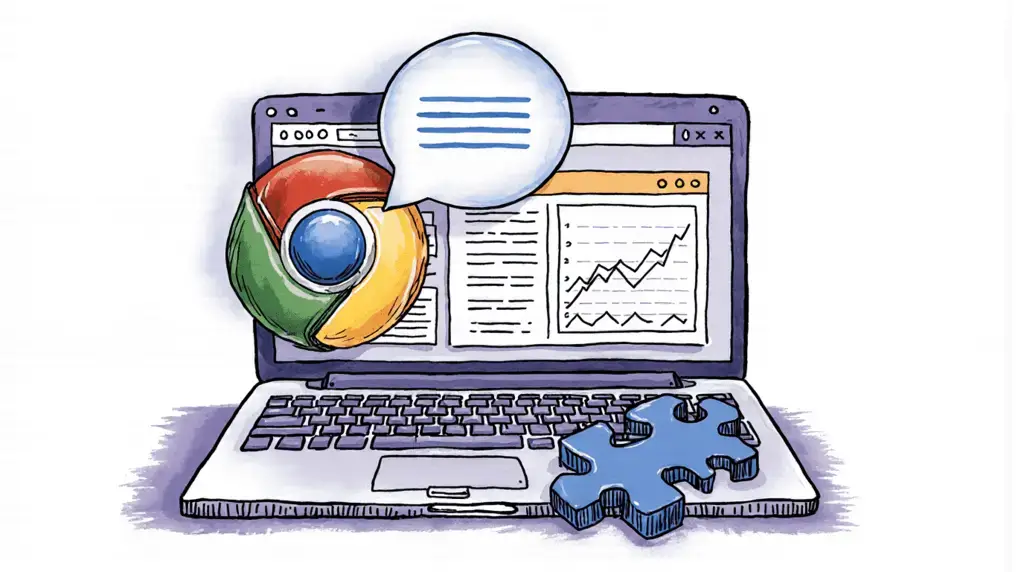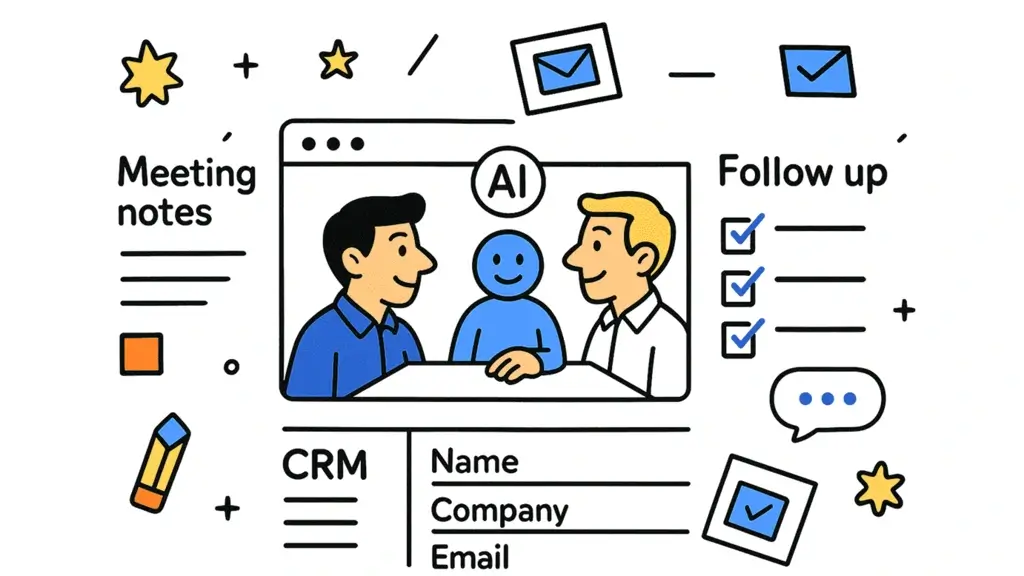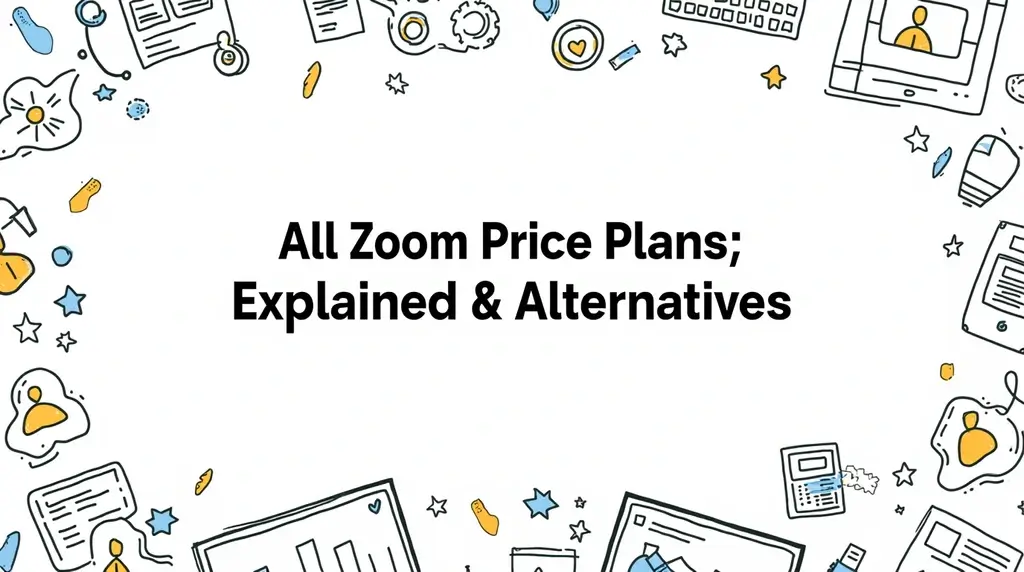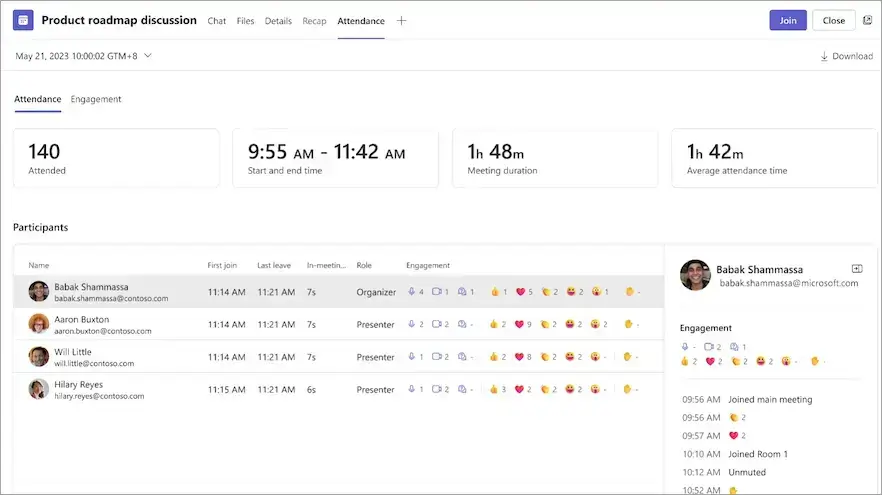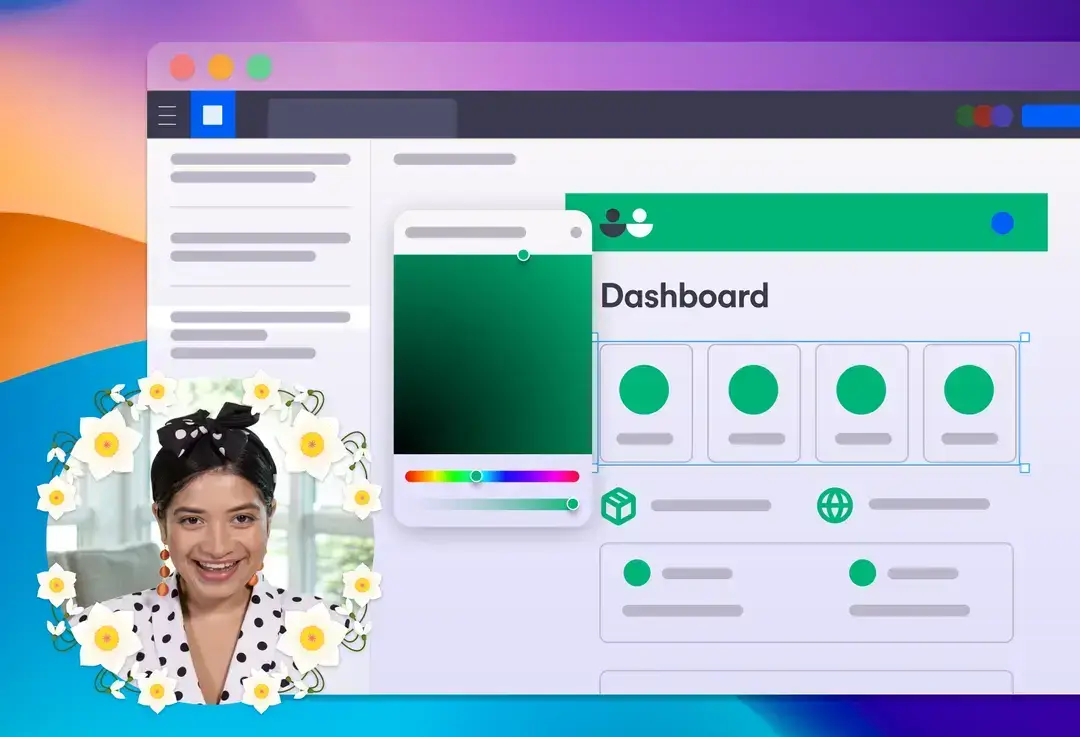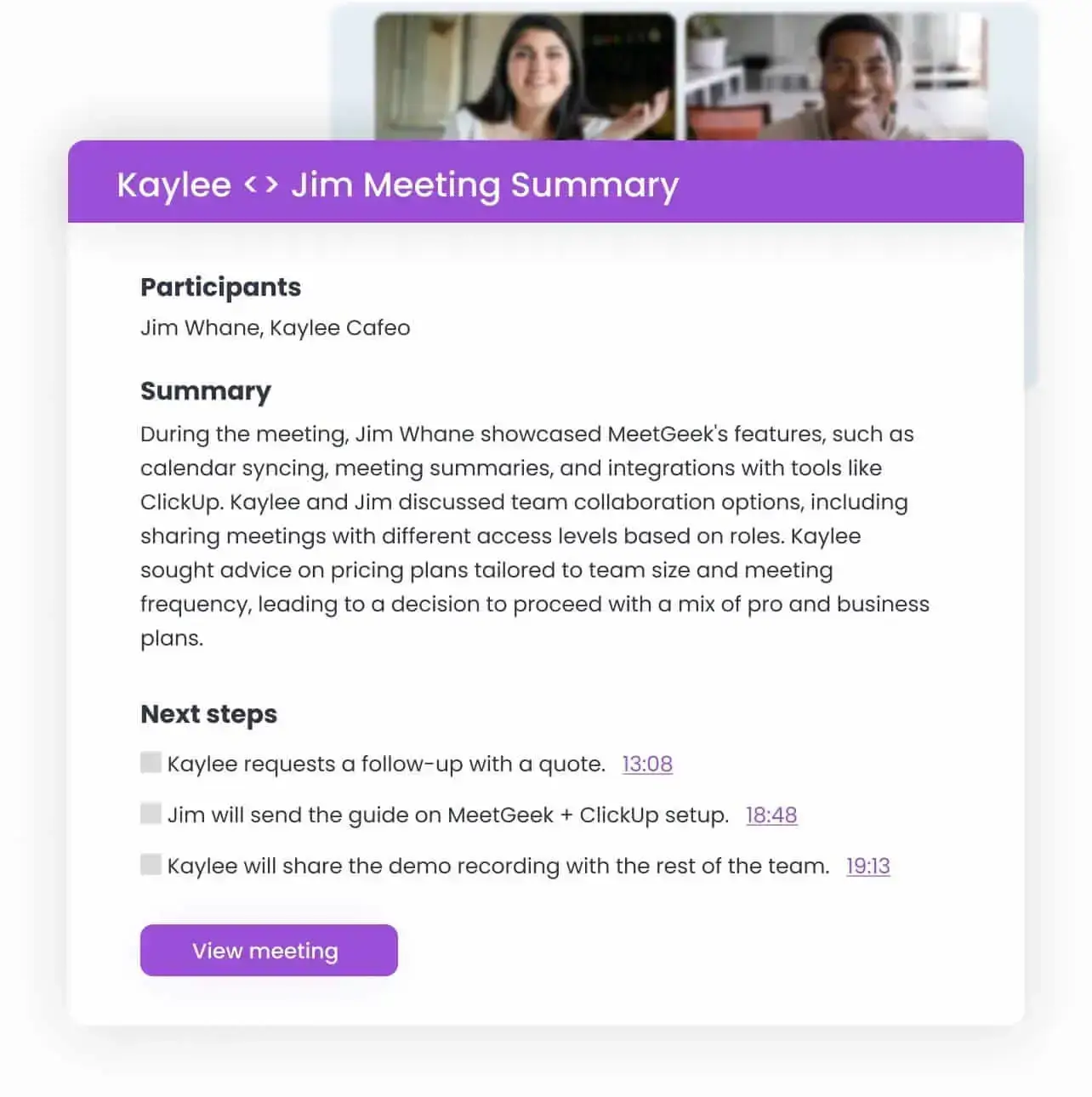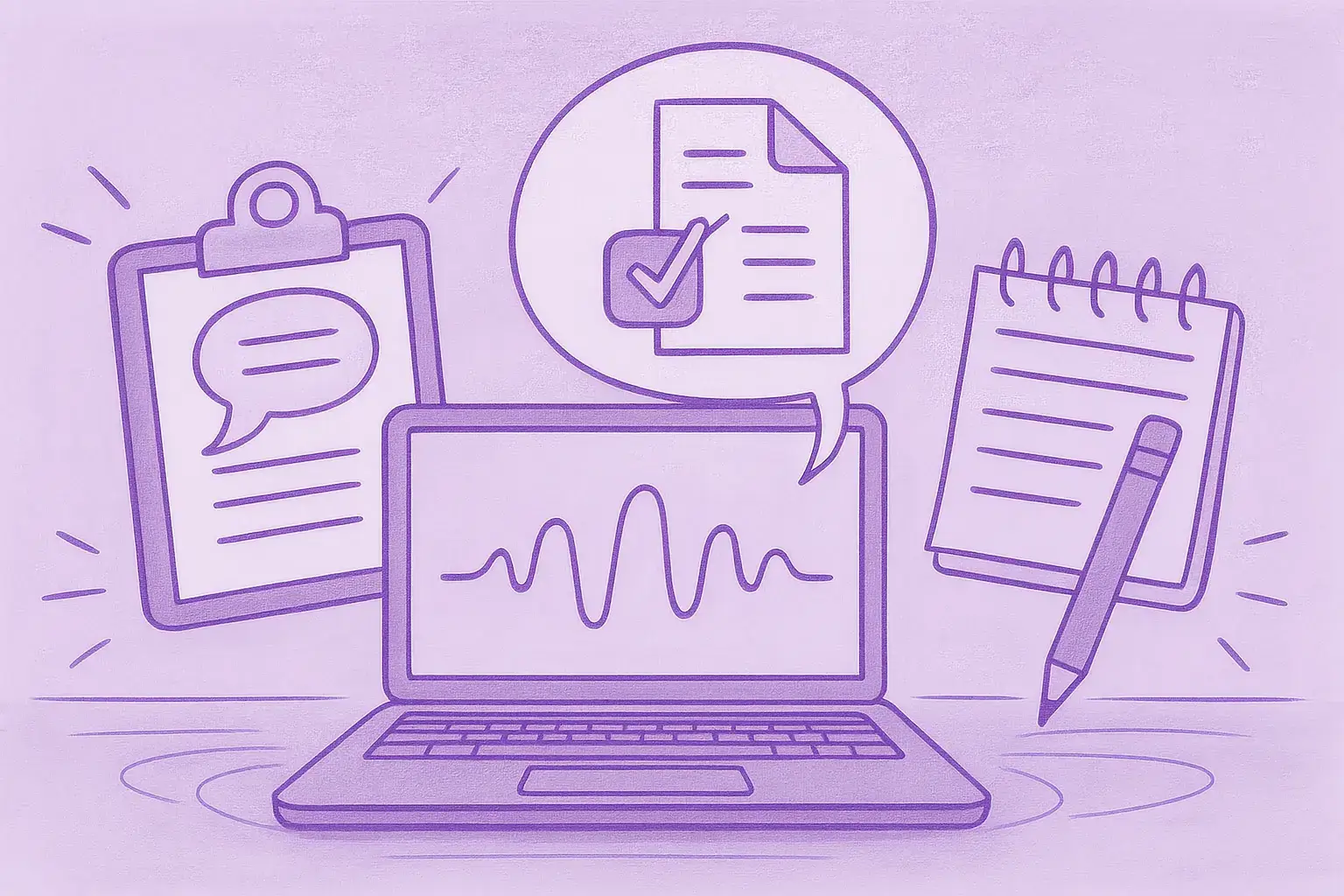12 Proven Tactics to Increase Productivity in Sales
Want to boost your productivity in sales, increase your conversion rate and close more deals? Read this to reach peak efficiency within your sales team!

✅ Free meeting recording & transcription
💬 Automated sharing of insights to other tools.

Image Source: rawpixel.com on Freepik
There is no denying that productivity in sales is underrated. Why? According to Forbes, your sales reps spend less than 36% of their time actually selling. What happens to the rest 64% of the time? It goes towards managing administrative responsibilities and non-selling tasks.
To defy this increasing trend and boost your company’s revenue, you need to focus on increasing your sales productivity. Read on to learn the ins and outs of boosting your sales process and achieving your sales goals.
Our key takeaways:
- One of the primary factors that hinder sales reps from performing to their full potential is the intense pressure to achieve KPIs, constantly changing business goals and a lack of coordination or poorly organized training sessions.
- The Eisenhower Productivity Matrix is still one of the most popular frameworks used by many companies to help their teams prioritize tasks and increase productivity throughout the workday.
- To calculate an individual salesperson's productivity, divide their sales revenue during a sales cycle by the number of working hours they had during that period. It is acceptable to observe variations, but the trends will become apparent in the long run.
- Sales efficiency and sales effectiveness are two separate terms that are interconnected at the same time.
- Ensure that your sales team is familiar with the tools in your stack such as CRM, project management tools, digital sales rooms, outreach platforms, and others.
- One of the quickest ways to identify where your sales team is underperforming on KPIs is by using audio transcription to transcribe their calls with prospects and analyzing best practices. MeetGeek is a free transcription tool that can be used to extract valuable insights from your team's sales calls. Use this data to create coaching sessions based on objective data rather than just opinions.
What Is Sales Productivity?
Sales productivity is an assessment of how your company leverages tools, resources, and processes to meet important business objectives while decreasing the time and expenses associated with identifying prospective customers and closing deals.
Sales leaders or high-performers in your organization can assist you in identifying and scaling the best practices to maximize productivity.
Why Is Sales Productivity Important?
In short, sales productivity helps organizations close more deals. Productivity is a key factor for leaders who want to improve their team's capacity to generate revenue.
Gaining data-driven insights, in particular, can assist sales leaders in identifying precisely where reps struggle when taking action to improve these areas. Besides, every company will benefit from this. Whether you're aiming for a big government contract or small SEO clients, you need actionable solutions. And sales productivity might become that solution.
Sales Productivity Challenges
Sales teams must overcome an overwhelming number of challenges to perform at their best.
To optimize your sales processes and achieve peak levels of productivity, it's critical to identify and understand what you’re dealing with in terms of obstacles.
Here are the most common sales productivity challenges you need to consider:
- Ever-changing sales funnel dynamics
- Extreme pressure to achieve goals
- Failing to prioritize key sales activities
- Inadequate ICPs (Ideal Customer Profiles)
- Inconsistent and insufficient sales strategies
- Insufficient top-to-bottom communication
- Lack of coordination and communication between sales and marketing teams
- Poor scheduling and planning, lack of data-informed insights
- Poorly organized training sessions.
Factors that prevent sales reps from fully taking advantage of their workday can vary in severity. One thing is for sure: there is no room for mistakes in an environment that is more competitive than ever.
The Best Way to Increase Sales Productivity
With so many roadblocks in the way of achieving sales productivity, there are a few core principles that you can rely on, no matter what sales strategies you choose to employ.
Here are the four pillars of sales productivity:
- Consistency
- Concentration
- Constant Innovation
- Prioritization
1. Consistency
A well-established organizational sales structure is mandatory. Although each sales team member has their own approach, they should follow the same guidelines in terms of sales strategy.
How they schedule and structure their day is also crucial. Learn what works and share it with the rest of the team.
2. Concentration
The number of things pulling us away from our daily objectives seems to be endless. To achieve your sales goals, focus on eliminating distractions and strategically approaching tasks based on their type. Implementing strategies to improve sales productivity can significantly improve your team's performance.
3. Constant Innovation
While clinging to what is effective may not always be "bad," doing so hinders development. The sales industry and business innovates so quickly that failing to adapt severely reduces sales rep productivity.
You need to ask yourself: Are your sales tools and processes in place? Are they as effective and efficient as they can be? Are your processes up-to-date? More often than not, the answer is no.
4. Prioritization
Having clearly established priorities implies identifying the sweet spot between task urgency and sales effectiveness.
When assessing priority levels, make sure to take into account:
- The task’s potential to generate revenue
- Sales reps’ ability to outsource the task
To determine the urgency of each task, filter them through the Eisenhower Productivity Matrix:
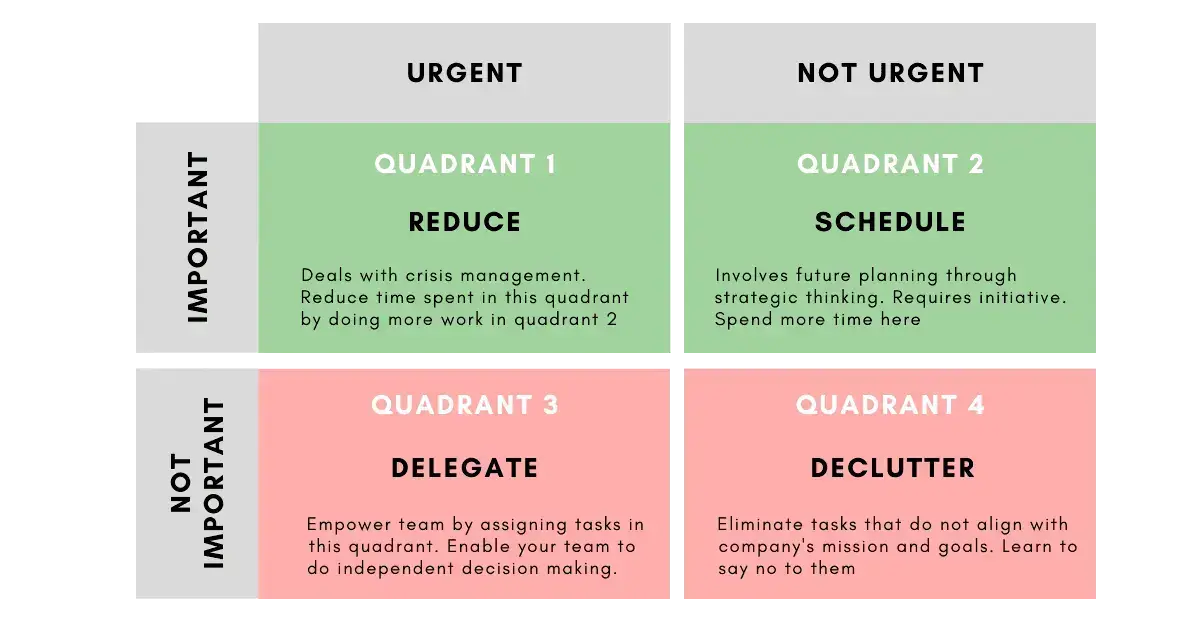
- High Impact, Urgent Activities
- High impact, Non-Urgent Activities
- Low Impact, Urgent Activities
- Low Impact, Non-Urgent Activities
Prioritize High Impact, Urgent Activities
Reps should prioritize revenue-generating, customer-facing work. Invest in sales enablement to increase rep effectiveness and make sure that they can easily access all the necessary content, support, and training.
Delegate High impact, Non-Urgent Activities
Your sales reps can focus on what they do best – selling – when auxiliary departments perform the complementary tasks. Delegate any responsibilities that are not directly linked to sales.
Automate Low Impact, Urgent Activities
Recurring, repetitive duties help your reps seal the deal, but their frequency simply takes too much time.
Integrate sales tools to automate both early-stage and late-stage duties. Use a sales enablement platform to scale your processes and remove time-consuming chores like finding the correct piece of content to send to potential customers.
Examine Low Impact, Non-Urgent Activities
Examine whether conventional practices within your strategy continue to generate value among your organization. Streamline what works and get rid of what doesn't.
Why You Should Measure Sales Productivity
Sales productivity is a crucial factor for any sales or sales enablement leader trying to enhance their team's capacity to generate revenue. Implementing capacity planning software can provide valuable insights into resource allocation, helping teams operate more efficiently and meet their sales goals.
To ensure that sales reps have everything they need to be as productive as possible, it is necessary to examine every step of the sales process, as well as overall business procedures.
This allows you to identify where your sales team is struggling and assist your employees with data-informed insights.
Sales Productivity Metrics
Metrics can help you understand where your team stands in terms of productivity goals. KPIs (Key Performance Indicators) are an excellent approach to assessing the efficiency of a sales team.
Some sales productivity metrics to keep an eye on are:
- Conversion Rate: Calculate how many prospects your team converts into clients.
- Average Deal Size: Check to see whether your reps are focusing too much on little transactions. Larger transactions make better use of their time.
- Retention Rate: Client retention is critical – attracting new customers but not succeeding at keeping them requires your further attention.
- Sales Length: Verify if your team is slowing down the sales process. Although the length of the optimal sales varies, you should have a standard that your average sales rep should be able to meet.
How to Measure Sales Productivity
To know where you stand in the sales game and the areas you need to improve, you need to learn how to measure your productivity.
Sales productivity is the term used to describe the correlation between a salesperson's efficiency – input – and effectiveness – output.
To achieve sales productivity, you need to optimize both efficiency and effectiveness, by reducing the input required for maximal outputs.
Sales efficiency refers to optimizing a salesperson’s time distribution. Instead of focusing on low-impact tasks, such as administrative activities, an efficient sales rep allocates more time towards high-impact tasks, such as call preparation.
Sales effectiveness refers to a salesperson’s capacity to generate revenue. An effective sales rep manages to hit sales quotas simply by harnessing the available resources – guidance, training, and content.
Tracking sales productivity needs to be done both on an organizational and individual level.
- To calculate organizational sales productivity, use this equation:

For instance, if your entire team made $150,000 in revenue during the previous quarter, and you had five reps on the team at the time, your team's sales productivity estimate would be $30,000/rep.
- To calculate an individual rep’s sales productivity, use this formula:
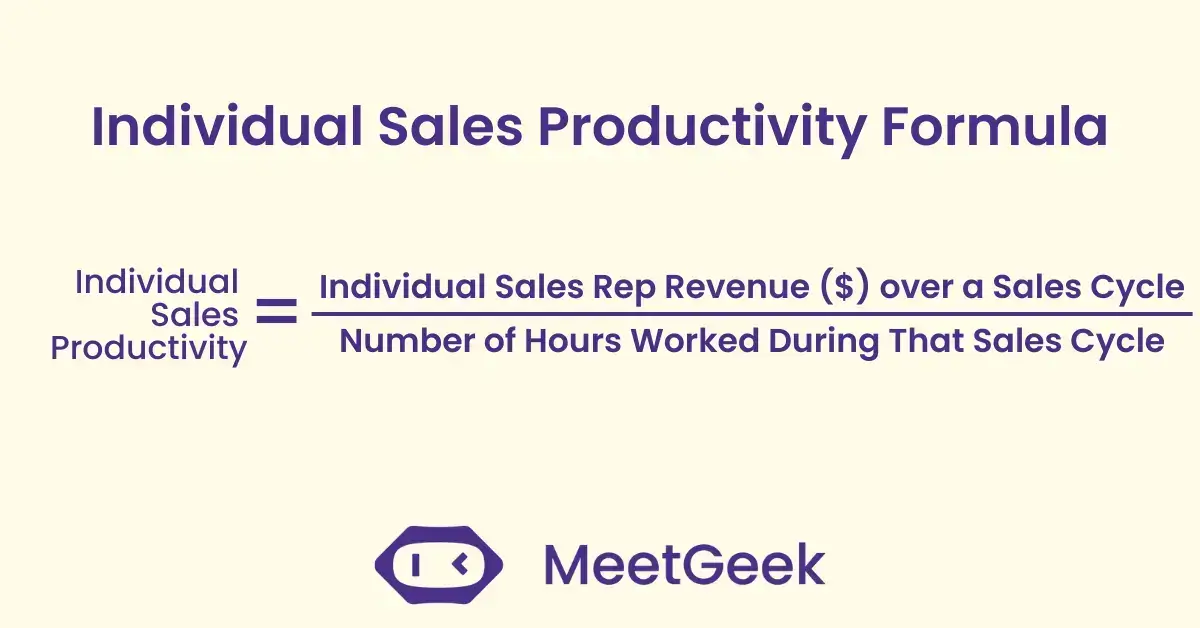
It's normal to notice daily, weekly, and monthly variations in your individual rep sales productivity figures, but over longer periods, you'll be able to rely on these calculations — and, most importantly, focus on increasing sales productivity.
Proven Tactics to Increase Sales Productivity
- Invest in onboarding and sales training for your sales team
- Create a sales managers’ shadowing program
- (Over) communicate with your sales reps
- Get the right sales productivity tools
- Automate and outsource routine administrative tasks
- Improve your lead scoring
- Align sales and marketing teams
- Centralize access to sales content
- Celebrate your wins
- Reduce meeting time
- Track & measure your sales process
- Create a Replicable & Scalable Process.
1. Invest in Onboarding and Sales Training for Your Sales Team
When your sales force expands beyond a few reps that you can coach directly, incorporating a proper sales training strategy into your new hiring process becomes critical.
It's your duty as a sales manager, director, or CEO to provide your sales team with the tools they need to meet the company’s goals. Moreover, you need to train them how to maximize their sales rep and salesman productivity by channeling their energy towards the highest-impact activities in the process.
It’s also your duty to make sure that, as your team expands, the information you provide is passed down correctly. Here, sales documentation comes to play by maintaining consistency in training content, reducing reliance on individual coaching, and providing a readily available resource for new hires.
Whether your sales training takes the shape of in-person seminars, online courses, conferences, internal resources, mentorship, or a combination of all of these formats, remember that it must be a continuous process to improve sales productivity.
There are constantly new sales coaching techniques, more efficient scripts, tougher challenges to overcome, new features being released, and new competitors joining the race, so you must be on top of your game.
2. Create a Sales Managers’ Shadowing Program
Sales managers have a lot on their plates, from refining your sales plan, to assisting with significant account closures, and hiring new reps to expand your team.
While they can absolutely provide some sales training to ensure that everyone continues to perform well, it is not always enough.
In fact, studies demonstrate that mentorship programs result not only in enhanced talents and selling abilities, but also greater salaries, shorter time to promotions, and higher internal retention rates.
Consider what you and your sales team stand to gain by having your top performers shadowed by the latest additions to your sales team. When receiving mentoring from those who have previously gone through it all, your junior reps gain first-hand experience, while senior reps advance in their careers and take a significant step toward reaching sales manager status.
In today's world, more and more teams rely on asynchronous communication, including hybrid and remote teams. Just imagine what a virtual AI meeting assistant like MeetGeek can do for your Sales Managers’ Shadowing Program!
Not only will more juniors be able to shadow a senior rep at once, but they will also be able to have a recorded copy of the video call, its transcript, and a summary to go over later. This way, your senior rep will be able to fulfill their mentoring tasks without compromising on the time spent selling.

3. (Over) Communicate with Your Sales Reps
Communication is a mandatory ability for sales managers to have, and that applies to all levels of a sales organization. To boost sales productivity, managers should routinely check in with each salesperson to get a sense of how they're feeling and performing.
Ask your reps to fill in a form, utilize VoIP for virtual calls, use contact center sentiment analysis to gauge your customer interactions, or schedule one-on-one meetings to give them the chance to speak their minds.
This is an excellent opportunity to request feedback and identify areas for development. If one person is struggling in one area, chances are that others are as well. Always ask what you can do to assist them in being more productive and make sure to follow through.
4. Get the Right Sales Productivity Tools
It is tempting to resist change, especially when things are already in motion. However, unaddressed ongoing issues will cost your team their productivity and you – your money. There are various sales productivity solutions available to help boost efficiency.
These are the types of tools you need to increase sales productivity:
- CRM Software
- Customer Feedback Platform
- Sales Intelligence Software
- Sales Automation Software
CRM Software
A customer relationship management (CRM) system – such as HubSpot or Pipedrive – will assist your team to keep track of leads, deals, and customers. AI CRM softwares can also provide information about customers to salespeople, allowing them to sell more successfully.
Sales Intelligence Software
This type of software collects data and information to aid in the sales process. This involves attaching industry-specific talking points for contacts before reaching out.
Sales intelligence software can also assist your team in locating contact information, monitoring prospects' social media activity, and identifying buying signals. Check tools like Apollo or Reply for those needs.
Flowla, the Secret to a Complete Buyer Journey
Transforming your sales cycle begins with creating an outstanding buyer journey. With that in mind, our friends at Flowla designed a platform that makes it easy for business leads to convert into customers. Flowla is a buyer enablement tool that unifies all of your resources in a workflow, helps build more engagement, creates actionable analytics, and facilitates repeatable processes.
Sales Automation Software
A sales automation software (such as Zapier) automates monotonous operations, allowing your team to spend more time directly interacting with prospects and completing deals. Emailing prospects, scheduling sales meetings, and preparing sales reports are all common tasks.
MeetGeek, Your Personal Virtual AI Meeting Assistant
Do your sales reps find it hard sometimes to keep track of their meetings with potential customers or remember the specific talking points they addressed? MeetGeek allows you to have any video call recorded, transcribes, summarized, and stored in one place.
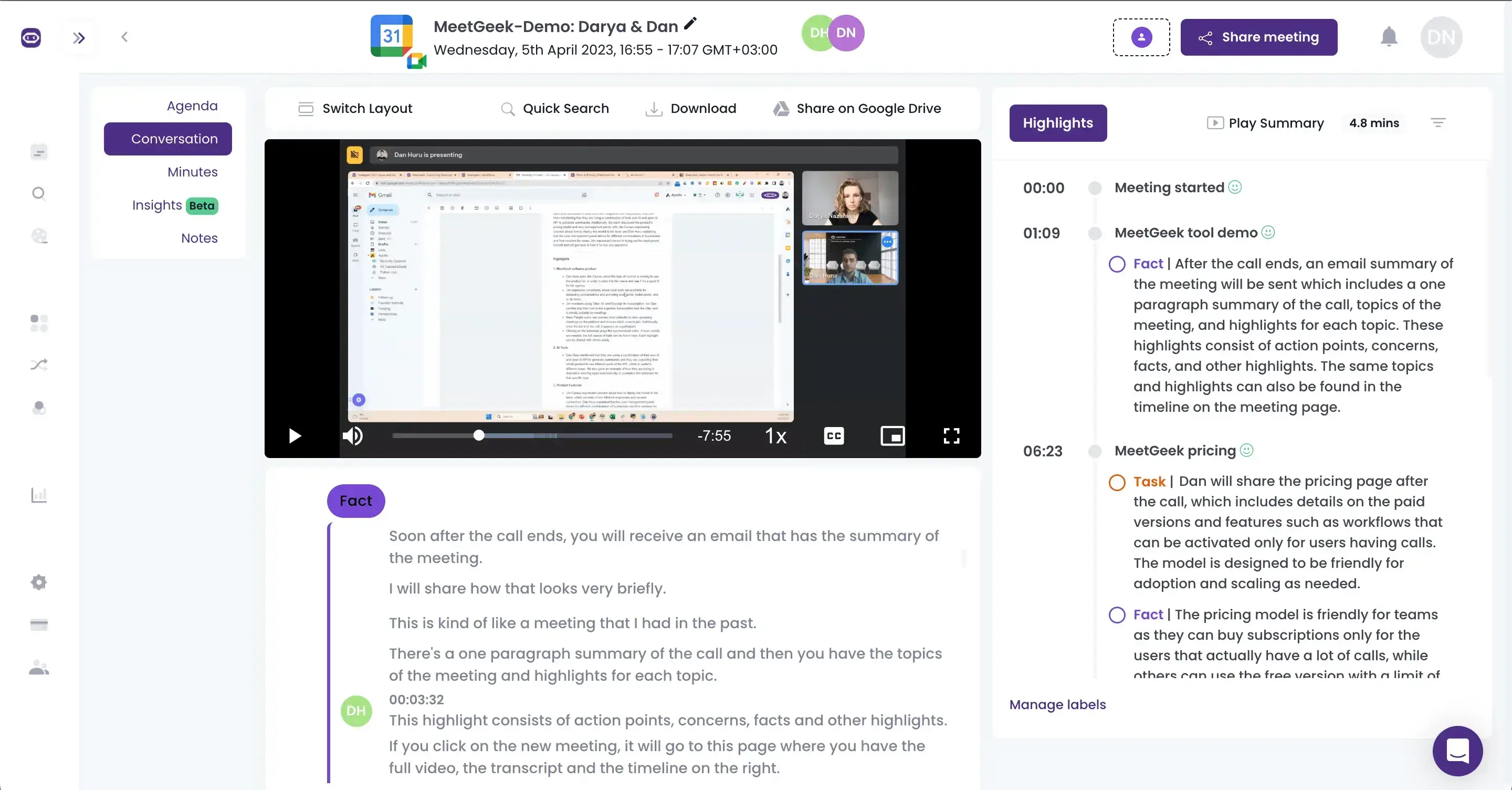
5. Automate and Outsource Routine Administrative Tasks
A sales automation software is a must when it comes to routine administrative tasks.
When deciding which tasks your sales people should automate, start by categorizing the activity: is it related to planning, admin work, or order processing? Automating routine tasks frees up your sales team to focus on what they do best - closing deals. This is why outsourced IT support is essential; it ensures your automation tools run smoothly, minimizing downtime and maximizing productivity.
For example, if you're following up with prospects from an event you attended, encourage them to call you to discuss their needs by scheduling a call with you. To facilitate this share your electronic business card with contact details and link to your calendar with attendees at the event.
If your sales reps are focusing too much on non-selling activities, despite having the right automations in place, hiring an in-house or virtual administrative assistant to help with more routine tasks might be an excellent investment.
6. Improve Your Lead Scoring
Lead scoring is a system that ranks prospects. Its purpose is to move higher-value leads through your sales process faster. It also prevents your salespeople from wasting their working hours by chatting with individuals who aren't at the bottom of the sales funnel.
While every company has its own strategy to rate its leads, collecting data from previous clients to accurately assign value is the most effective way to establish a lead-scoring system.
Which of your existing customers' attributes, characteristics, demographics, and geographic areas influenced them to buy from you in the first place? Which of these characteristics do your customers share?
After analyzing the historical data from each of these categories, you can decide which features should be assigned value, based on how likely those characteristics are to indicate whether they'd be a good fit for becoming a customer.
You can improve the accuracy of your lead scoring model by combining both explicit (data points such as firm size, industry segment, job title, or geographic location) and implicit information.
Tracking and monitoring your prospect's conduct beyond what they've informed you about themselves generates implicit scores. Additionally, implementing lead scoring software can streamline this process by automating data collection and analysis, ensuring more precise and efficient scoring.
Finally, your ability to increase your lead-scoring efforts can significantly boost the quality of leads your sales team receives. That has a direct effect on sales productivity.
Make Your Analytics Actionable
Actionable analytics allow you to put the information you gather into the right context. You can use buyer enablement tools like Flowla to measure prospect behavior and intent. This will help you analyze your leads and score better deals in less time.
7. Align Sales and Marketing Teams
Conversion rates may remain chronically low if your marketing team isn't actively bringing in qualified leads.
Vice versa, your marketing staff won't be able to create a plan to properly promote your brand and produce those results if your sales department can't precisely describe what exactly they need more of in terms of leads.
To align the effort of your sales and marketing teams, bring them to work together to give them the opportunity to interact.
This implies that the marketing department should participate in weekly sales meetings and hold more in-depth monthly meetings with sales managers to discuss lead quality and look at your channel-specific conversion rate.
From there, marketing can design trials to see if they can change lead behavior. Subsequently, they can design tests to see if it’s possible to change the lead source (and quality).
Your sales staff will spend more time engaging with prospects that have a higher chance of converting if they can cooperate with marketing to ensure a steady flow of higher quality leads. The level of sales productivity will soar.
8. Centralize Access to Sales Content
Blog posts, templates, explainer videos, checklists, interactive flipbooks – all of these are assets that can come in handy when dealing with day-to-day roadblocks. Additionally check online resources detailing generative AI use cases for marketing and sales to understand what else can be created.
Each of your company's main marketing assets should be structured and easily accessible to your sales staff in a single place, such as a company-wide available Google Spreadsheet with resource titles and relevant links. While investing in sales content management software can help your team to organize, share, and track client-facing sales content.
Platforms like Clickup will make things a lot easier when it comes to team collaboration. This all-in-one tool is great for planning, tracking, and collaborating on any project, and it allows you to build the perfect workflow for your team!
9. Celebrate Your Wins
Businesses frequently make the fatal mistake of creating competition among team members. Failing to foster a culture of cooperation within your company affects your overall sales efficiency.
Try to create an environment that motivates everyone to achieve success together. Do so by recognizing and affirming any milestones or accomplishments – no matter how big or small. Tool like nTask can help you create and manage milestones of your projects.
When the team dynamic is centered on sharing knowledge, improving networking, and supporting one another, everyone is more productive and goal-oriented.
10. Reduce Meeting Time
This should be a no-brainer, but before sending out meeting invitations, ask yourself if that meeting can be replaced with an email. If it can’t, apply the rule of minimum possible attendance: if a person cannot answer the items on your meeting agenda, why have them at the table in the first place?
The less time your sales representatives spend in meetings, the more focused hours they will have to work on closing deals and generating revenue.
This is true for both one-on-one meetings between managers and sales representatives, and team sales meetings. Your sales team will appreciate it.
Are you still unsure who belongs in which meeting and are afraid of compromising the productivity of your sales (and meetings)? With a virtual meeting assistant like MeetGeek, you can share a summary of your meetings with all of your colleagues, without them having to be physically present.
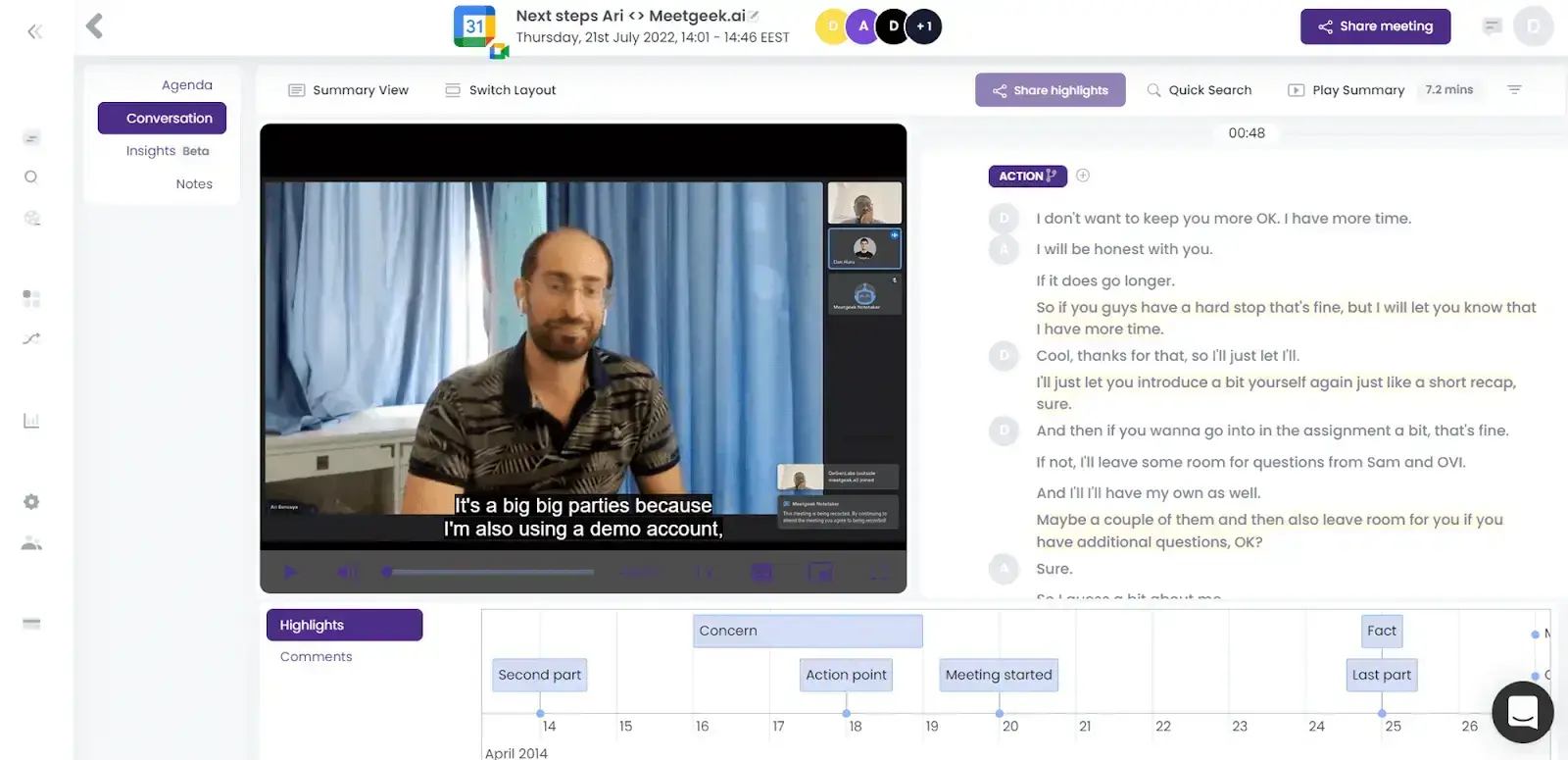
11. Track & Measure Your Sales Process
Reassess and readjust your sales enablement strategy on a regular basis.
Your sales operations generate significant data and valuable insights that serve as training and coaching materials, as well as resources for your sales reps to refer to when needed.
To align your key performance indicators (KPIs) with your goals, focus on analyzing the following key sales indicators:
- Sales Activities
- Pipeline
- Sales Enablement
- Sales Performance
- Demand
It's also a good idea to go over your sales data with your reps on a frequent basis, so they know where the team and their individual performance stand during the sales cycle.
12. Create a Replicable & Scalable Process
All sales organizations are different, but that doesn’t mean that defining your own process to increase sales productivity is impossible. Create measurements based on how your top reps are performing.
When observing how top performers carry out their daily tasks, take notes of things like:
- How many emails do they send daily?
- How fast do they respond to emails?
- How long do their conversations with prospective customers take?
- What are the sales tools they use?
Although your observations may vary depending on whom you’re evaluating, some patterns will start to emerge. Without compromising each team member's autonomy, you can use your observations as a set of instructions and repeat the process.
Create a New Generation of Sales Leaders!
A productive sales enablement approach improves the overall content process by increasing cooperation, improving alignment, and revealing insights that lead to more informed business decisions.
The key to increasing your sales team's efficiency is to provide them necessary strategy, tools, and resources. Join top-performing sales teams and try MeetGeek for free!
.avif)




